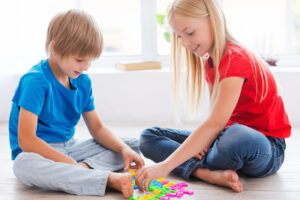Getting quality sleep is essential for children. Bedtime routines are a consistent, repetitive set of activities that are carried out before bed every night. They help prepare your child for sleep by having them relax and wind down. A predictable routine also gives your child a sense of security and teaches them how to fall asleep on their own.
Research shows that children who follow bedtime routines are more likely to go to sleep earlier, take less time falling asleep, sleep longer, and wake up less during the night. These benefits to sleep quality are still seen years later3 in children who followed bedtime routines when they were younger.
In addition to improving sleep, bedtime routines teach your child self-care and lay the ground for working memory, attention, and other cognitive skills. They also foster parent-child bonding and may help improve mood, stress levels, and behavior.
In the long term, these benefits translate to better readiness for school, as well as better academic performance and social skills.
Some ideas for bedtime routines are:
- Nutritious snack or bottle/breastfeeding
- Bath or diaper change
- Brushing teeth and going to the bathroom
- Reading a book
- Lullaby or singing a song together
- Massage, cuddling, and rocking
- Talking about their day
- Avoid screen time
The bedtime routine should culminate in a goodnight kiss and lights-out. You should leave the room while your child is sleepy but not asleep yet. This way they learn to fall asleep on their own, and they won’t panic if they wake up in the middle of the night and find you gone.
Reference:
Pacheco, D. (2021, June 24). Bedtime Routines for Children. Retrieved from https://www.sleepfoundation.org/children-and-sleep/bedtime-routine



